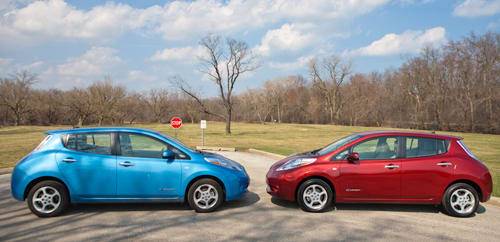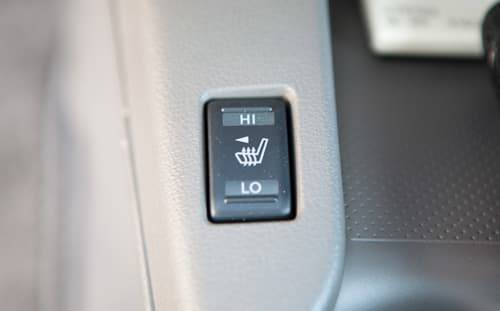Cars.com Compares 2012 Nissan Leaf with 2011


Though Cars.com has owned a 2011 Nissan Leaf for 13 months, we accepted the opportunity to evaluate a 2012 model. Its changes are few, but we figured we’d compare it with our Leaf, with an eye toward any unexpected differences.
The comparison was driven mainly by our obsession with the Leaf’s sketchy ability to predict its range, as detailed in a previous post or two. Would the 2012 be more accurate? Would it deviate as much as our own car’s Random Range Generator, as we call it? And if so, would it deviate correspondingly or in its own random style? Theoretically, the cars’ software is the same. Our car has been updated twice, most recently three weeks ago.
Here’s what differentiates the 2012 from our 2011: It has heated front and rear seats and a heated steering wheel. The high-voltage battery pack has more insulation and a warming system for extreme circumstances, which we described in a previous post. The added features amount to a mere 26 pounds of additional weight.
Beyond that, and the fact that 2012 buyers can no longer shut off the pedestrian-warning signal, the two model years are essentially the same.

As for the heated steering wheel and seats, they work; enough said. It was over 80 degrees outside when I tried them. You see what I do for our readers?

Per our usual protocol, we started with both cars freshly charged and did our trip in two legs, switching drivers roughly halfway through it. We set the ventilation on both cars to Auto, at 70 degrees. Later, we changed it to 68 degrees, having agreed that we’d chosen poorly, but did so simultaneously.
Traffic was light, so we were able to drive up to 75 mph for much of the first leg of 19 miles. Then we switched to more of a stop-and-go route for the 26-mile leg back to the Cars.com office. Here, too, traffic remained light.
From the start, the cars had different ideas about their range. The 2011 predicted 93 miles, and the 2012, also fully charged, predicted 103 miles. After the first leg, the 2011 predicted 66 miles remaining and the 2012, 73 miles. Both had expended three of 12 bars on the battery-charge graph.
By the end of our journey, the 2011 and 2012 both predicted 34 miles of range remaining and had four battery-charge bars remaining. The accounting of energy economy was practically the same for the two (within 0.2 miles per kilowatt-hour) averaging 4.1 mi/kWh. Average speed also registered nearly identical at 22.4 and 21.9 mph for the old and new Leafs, respectively.
We expected more variation, frankly. Arriving with the same estimated range suggests that there’s some method to the onboard computer’s seeming madness. Using our range-accuracy formula, where 100% is perfect, the 2011 model’s lower initial predicted range gave it an accuracy rating of 69% for the whole trip. The 2012’s initial overestimation made its accuracy 60%. They were reasonably close to each other, though both performed worse than the 86% average we calculated over the course of one month in our 2011 Leaf.
Unfortunately, looking at the legs separately revealed the chaos we’ve come to expect.
Predicted-Range Accuracy: 2011 Leaf vs. 2012 Leaf
Leg 1
97% vs. 79%
Leg 2
75% vs. 86%
Full trip
69% vs. 60%
The 2011 was more accurate during the first leg, and the 2012 was better for the second leg. We can’t imagine why. Same route, same speed, same time. Differences in reported energy economy, which were small, also didn’t correlate with the changes.
So, we’re back to wondering what keeps the Leaf from predicting its range more accurately. As we’ve stated in the past, there are many variables it can’t possibly predict perfectly, but we’ve seen more accuracy in our Chevrolet Volt. It just seems like the Leaf isn’t collecting all the data it should, or that its algorithms fail to reach accurate conclusions. We look forward to testing other battery-electric cars like the Ford Focus Electric and BMW ActiveE, which employ thermal management similar to the Volt’s.

Former Executive Editor Joe Wiesenfelder, a Cars.com launch veteran, led the car evaluation effort. He owns a 1984 Mercedes 300D and a 2002 Mazda Miata SE.
Featured stories




